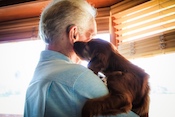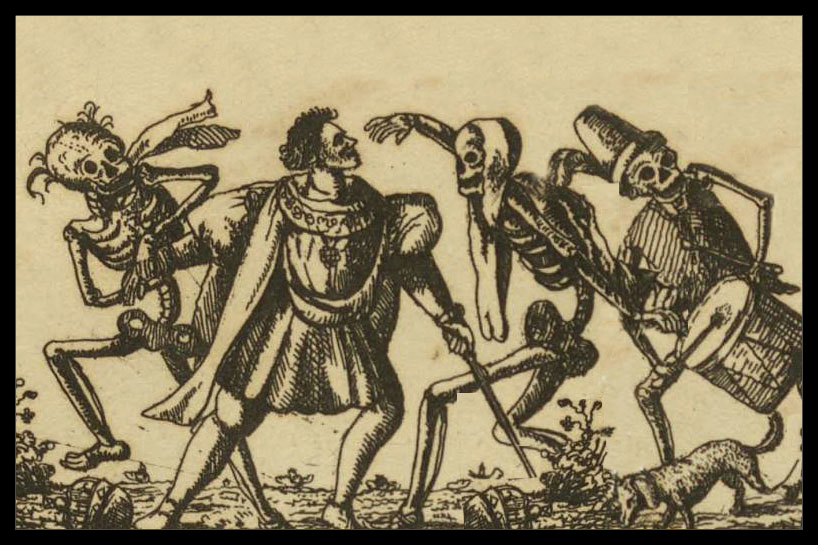And An Important Takeaway
Ginger is my Irish Setter. Actually, Ginger is my second Irish Setter named Ginger. I got my first Ginger after returning from a year of post-graduate studies at the University of Edinburgh. I got a job and got Ginger.
In my twilight years, I also got my second Ginger as a puppy. In October, she will be five. Three things drive me in life: my family in Myanmar, Ginger, and teaching in that order.

The first half of Ginger’s life was fun for both of us. We did everything together, whether it was walking around the lake or playing chuck-it. When we weren’t exercising, she would sit at my feet as I taught online or wrote essays for my website.
However, the last couple of years were interspersed with a dozen or more trips to her vet when she was extremely sick and not doing well. As I drove to the clinic, I would reassure her that she would be alright even though I dreaded that I might be wrong. Her vet told me to take her down to Purdue Veterinary Hospital again.
On the first two trips to Purdue, Ginger was kept overnight during treatment. When she was discharged, I would get a treatment plan and needed medicines. All went well for a while, and then problems started to re-emerge. I would rush Ginger to see her vet, who was able to treat the problem. There was no way to cure her medical problem; treating them was the objective.
However, our third trip was radically different. Ginger hadn’t eaten anything in three days. I drove her down to Purdue. Due to COVID-19, you were to sit in your car, and the staff would come to the car to pick up your animal. I was used to that procedure because that was how they handled it in the previous year. Then the doctor would call you on your cell phone and discuss the medical problem.
Ginger was taken to the emergency room. It wasn’t long before Dr. Haginoya called me, and we talked several times a half dozen or more times during the day. At the end of the day, we met in the hospital waiting room. He said that he advised keeping her overnight, which they did.

The next day, Dr. Derre called me. He is an internal medical doctor. Ginger had been moved from the emergency room to his part of the hospital. He outlined what they were going to do and asked several questions. He would call me several times that day. Ginger has now been a canine patient for two days.
Dr. Derre called and said that Ginger was still not eating at the end of the second day. Therefore, he moved her to ICU and feed her intravenously late in the evening. In addition, he did several more tests, including another blood panel.
Several hours after feeding her intravenously, Dr. Derre offered Ginger her regular prescription dog food. The following morning, he called me to announce that she ate some food. I’m not sure who was more surprised, he or I. Dr. Derre said that I could pick her up late that afternoon. He gave me a treatment plan and instructions, including keeping her in her crate or in my office at home while I was on the computer. He wanted to limit her activity level due to not eating for more than three days.
When I returned to the Purdue Veterinary Hospital, I couldn’t have been happier. I feared that Ginger wouldn’t make it. I went to the receptionist desk and said that I came to pick up Ginger. A couple minutes later, I happened to see a doctor who seemed to be pulled around by a dog on a leash. I realized that it was Ginger about the same time that she noticed me. Talk about a reunion between a dog and her owner.
I have written about Ginger’s habit of licking my hand before we go to sleep at night. That only occurs when she isn’t feeling well. It is her way of expressing her love and appreciation for my caring for her during those times. Ginger didn’t lick my hand; it was my face. She was overjoyed. We have both danced with death and learned to enjoy the moment.

Dr. Derre tried to go over Ginger’s treatment plan, but Ginger was wired and excited. He gave the leash to Eryn, who is a veterinary student at Purdue. She works in the hospital as part of her training. She reminded me of Jesse, who was a student at Purdue when Ginger was there last year.

There I was as excited as was Ginger. As Eryn held Ginger at bay with both hands, Dr. Derre made sure that I understood every detail of Ginger’s treatment program while he waited for the blood panel results. He asked if I had any questions. What flashed in my mind was that I must have talked a dozen times to each doctor in the past several days. Every question or concern that I had was addressed. You would expect doctors to do their job, which Dr. Haginoya and Dr. Derre did.
Beyond their medical expertise, there was one common thread that each of the doctors demonstrated along with Eryn. They all cared for Ginger. There I was talking with the Purdue doctors and student about my personal angst. I feared that I wouldn’t be bringing Ginger back to our home. Nevertheless, when they spoke to me about medical concerns regarding Ginger, I could hear in their voices their emotional concern and attachment to Ginger. As I was going through my emotional hell fearing for Ginger, they too dealt with Ginger with their personal care for her. I’ll never forget the two doctors and their student.
When Ginger and I returned home, we talked about her three days in the hospital. Ginger appreciated her treatment and care. However, she was a little miffed.

I asked her what was bothering her. Ginger mentioned that the beautician at the hospital must have thought that she was a Poodle and shaved her front legs like they do with Poodles. I tried to explain that Dr. Derre had someone shave her front legs so that he could put the IVs in her legs to feed her intravenously.

So, this essay is about a near-death experience that Ginger had. You know that I love Ginger, but what is your takeaway from this essay?
Ginger and I have done the dance several times. I could have been dead a dozen years ago if it weren’t for a radiation oncologist at the U. of Chicago, whose family background is Chinese, and a neurosurgeon at St. Mary’s Hospital, whose family background is from the Middle East and is Muslim.
I was facing Ginger’s looming death. Ginger’s recent dance was addressed by an emergency room doctor from Japan and one from France. The student who assisted both doctors is a black female. Race, sex, ethnic background, religion, etc. had no bearing on their treatment and concern for my dog or me.
When I met Dr. Haginoya, I told him that I wanted to apologize for how many Americans dislike or mistreat Asians. I told him that I have several doctors with Asian backgrounds, and I apologized to all of them for discrimination and racism. My family in Myanmar is Asian.
When Dr. Derre and his student discharged Ginger, I mentioned this issue of racism. I don’t know whether Dr. Derre has faced discrimination. My comment was more addressed to Eryn.
So, some old white guy is upset by racism in America. What do I really know about racism? It isn’t a personal attack against me. I wondered what went through Eryn’s mind as I vented. Racism is a 24/7 issue for her and all the other Americans who are a part of communities of color.
Ginger and I are alive due to the treatment of a diverse group of people. All the medical people who treated us came from different racial or ethnic backgrounds, but those differences didn’t affect their medical treatment. Additionally, their sex or religious backgrounds didn’t enter the picture either. Nonetheless, many Americans judge people not by what they do but by their race, ethnic background, or sex.
Follow @mountain_and_me















